Five Learnings:
Four PicturesThree Haircuts (and three different pairs of glasses)Two Books:One Blessing by Jan Richardson in A Cure for SorrowWelcoming Blessing
When you are lost in your own life. When the landscape you have iknown falls away. When your familiar path becomes foreign and you find yourself a stranger in the story you had held most dear. Then let yourself be lost. Let yourself leave for a place whose contours you do not already know, whose cadences you have not learnedf by heart. Let yourself land on a threshold that mirrors the mystery of your own bewildered soul. It will come as a surprise what arrives to welcoem you through the door, making a place for you at the table and callin you by your name. Let what comes, come. Let the glass be filled. Let the light be tended. let the hands lay before you what will meet you in your hunger. Let the laughter. Let the sweetness that enters the sorrow. Let the solace that comes as sustenance and sudden, unbidden grace. For what comes, offer gl;;adness. For what greets you with kindly welcome, offer thanks. Offer blessing for those who gathered you in and will not be forgotten -- those who, when you were a stranger, made a place for you at the table and called you by your name. Peanut Butter - We’ll start with the low hanging fruit, or in this case the legume with a protein punch. I love peanut butter. And I eat it out of the container with a spoon. I prefer organic, creamy peanut butter with salt but no added sugar. And did you know that if you melt a few chocolate chips with peanut butter in the microwave, the calorie count doesn’t count? It’s true. Don’t bother me with science on this one. Finding Home Delivery Food - I like many have gone down deep rabbit holes looking for ways to obtain food online, both fresh food and staples. For the past eight months, I’ve mostly relied on Misfit Vegetables that have been delivered to me weekly. Since the pandemic, I have tried amazon and Thrive Market. Next week, my local CSA begins and so I’ll trade in my misfits until the winter months when the farm share finishes up. But in the process, I (like many) had a hard time finding yeast. That is until I bit the bullet and bought the price-gauged 2 lb bag from amazon. I have since been able to share the large haul of yeast with two extremely happy friends (who also were looking for yeast.) Finding a Dog - Right before the pandemic, I had begun entertaining the idea of getting my first dog. My partner has lots of experience with dogs and so we had begun a list of what we wanted/ needed. (Hypoallergenic, medium size, young or adult but not senior, and male were our preferences.) I have applied for four dogs and have not yet been chosen because… EVERYONE IS GETTING A DOG EXCEPT ME! Although I am discouraged, I will persist. Today I filled out two more applications; maybe today is the day! The NY Times Daily Mini Crossword Puzzle - Somewhere in the first week of the pandemic - see also a whole new reason to avoid the news - see also the President started arguing with the Governors - see also I began to literally loathe cable news for how their sentence structure seemed to only wish for my fear to increase - I subscribed to the Times online and with it, I get the daily mini puzzle. This is about the only puzzle I have a chance of finishing. And about every other day, I enjoy answering questions that have actual answers. The Sunset - Somewhere in the middle of the last six weeks, I started relying on the sunset as a way of exhaling all of the worries and stress, uncertainty and unpredictability of the day. Thursday Storytime - Truly, the best time of my job right now is a weekly facetime live storytime I do for the children (and adults) in my congregation. I miss the 3D interaction with my “flock” and for some reason, this feels more touchy than even our live stream worship on Sunday mornings. 17x24 graph paper - Many, many months ago, I started using large graph paper to map out my ideas and even my schedule. But during the pandemic, I start with a fresh page each week. I plot things out using boxes and arrows and different color sharpie markers. I’ve always been a random, non-linear thinker and this has kept me surprisingly on track since our world was turned upside down. The Kaleidoscope on my desk - Years ago I read a book called Bee Season, where the wife in the story had a touch of kleptomania. She was stealing very small, random objects and placing them in a storage locker. When they finally caught her, the collection looked like a kaleidoscope and for some reason the image has stuck with me. (So weird, I know.) Since then, I have always kept a kaleidoscope close at hand. Turning it and allowing the color and small, random pieces to float to the other end is soothing and provides a perfect pause when I’m switching gears or when I’m looking for a different perspective. My Home Workspace - I live 20 feet away from the church that I serve. And yet with social distancing guidelines, I realized I would not be comfortable in a big church building all by myself for the foreseeable future. So, I created a work space at home. I covered a plastic table and placed it by a window. I found some plants and the necessary books. It wasn’t until I carved out a new work space that I felt I could move forward under the new circumstances. And for the past week, two different families from church have gifted me with flowers that sit behind me as a backdrop for my zoom meetings. Calling a friend - Last but not least? I put it last because I tend to try to do it on my own for as long as I can - longer than I ought. But eventually I remember that we are all meant to be interdependent and not independent and then I call, facetime, or zoom with a friend. What I've loved most in the calls these past six months, all emotions are welcome. All frustration, all questions, hope and hopelessness was allowed.
As I saw in a meme recently, we're all in the same storm, but we're not all in the same boat. All of us respond to stress and anxiety differently. We don't all have the same needs. We don't all have the same resources. We all have our lifelines though - sometimes they're an easy grab like a jar of peanut butter and other times, we have to reach further to make the phone call. What are ten things that have served as your lifelines in the past six weeks?
It's not the end of January so I think it's still fair for me to pull together a year end review of 2019. I've been thinking about my own spiritual or personal growth this past year. The truth is - this year was a whirlwind of change. But all of it seemed quite natural in hindsight. The most simple way to talk about it is - I continued to move forward in 2019. And moving forward is still incredibly hard. Each step I take into my future is one step farther away from my life with Pete. I'm in my third year of grief and I would say this is the hardest so far, for me. Everyone grieves differently. For me, the first year was a blur without much feeling; I was numb. The second year, I found my own self for the first time in years, having been a caregiver for most of my marriage. The third year - well, I'll wait until it's over to summarize so simplistically.
Instead, I'd like to share the books that accompanied me along the way this past year, books that offered healing and growth in so many ways.
Toward the beginning of 2019, I was desperate to better understand those closest to me. I, of course, was learning so much about myself or maybe a better way to say that was that I was learning to help others understand me better. Remember, I had a partner who really knew me and I hadn't realized how much I relied on him "just knowing" how to be in relationship with me. Now, it was up to me to ask for what I wanted and then also be in relationship without the help of Pete by my side. The Path Between Us by Suzanne Stabile, along with its partner The Road Back to You, is a great resource for understanding the enneagram in relationships.
I ate this allegory up. A little boy is grappling with grief, although I don't know the word "grief" is ever used in the book. I went on all kinds of emotional rides with this one and I don't want to give anything up... so, find it. Read it. Tell me what you think.
For some reason, learning about something so outside the norm of what I think about or work with was just the right thing for me this year. I got so into octopuses (and yes - that is the proper plural!) that Jameel (my companion) and I took a trip to the New England Aquarium to see their octopus.
I made a new friend this summer when I was presenting at the Wild Goose Festival in North Carolina. Meet Kelly Deutsch. Kelly is a coach and cares deeply about spiritual growth. This book of hers, Spiritual Wanderlust, is so accessible and seemed to poke at my own longings for spiritual depth. She has traversed a lot in her life as a Christ follower and is currently creating quite an online community of spiritual seekers and wanderers. Check her out!
Finally - and perhaps most importantly to me this past year was this life-changing read. Essentially, I've been paying a therapist a small fortune to teach me to be kind to myself. And this book right here was how she finally cracked my internal judge. I found this to be a helpful read, meaning there were plenty of prompts to learn and practice self-compassion.
So in the end, my 2019 was filled with learning about others, exploring the scary part of my grief, turning to the cleverness of the octopus, reconnecting with the spiritual wandering within me and most of all learning to be kind to myself. Yesterday ended my intentional time of rest. As Ann Lamott says, "Almost anything will work again if you unplug it and turn it back on you, including you." Here is a journey of my last 3 1/2 months in pictures. Change is never easy. And throughout this time of rest, I continued to work through grief. Letting go as I was able so as to take hold of what might be next. Along the way, the Mindful Path to Self-Compassion was my companion. I leave you with its primary mantra:
May you be safe. May you be content. May you be strong. May you live with ease. I have cried buckets of tears, rested for two months, drove over 2000 miles, downsized my instrument collection of one piano and a set of congas, cleaned out my closets of unused items, parted with Pete's wheelchairs, and poured my thoughts into 168 pages in my journal. And in so doing, I have uncovered joy. Last night I sat outside after a huge thunderous rain storm and gave thanks to God, the ground beneath me and the Mother of us all, for being present with me. She has shone enough light on my path for me to see my way forward and my way inward and my way outward. Pete used to always say that I had what the French call joi de vivre, a life giving joy that walks into a room before I do. And although I was quick to joke, to laugh and to make light of almost anything life was throwing at me, I had a hard time finding this joy within myself. I’m not sure when this joy started to hide but I have a pretty good idea of what started to pile on top of it. For me in the second year of grief as a widow, I began to see more clearly the pain I experienced as a caregiver. I started to have more words for the struggles I had navigated. I could feel again. And the feelings that swarmed in my head, feelings of anger and frustration and regret and even bargaining, finally settled into my body in the form of sadness and depression. And as my therapist explained to me, once we feel sadness in our bodies, we can no longer run away from it. Sadness takes up residence and it becomes a companion. And this companion has been helpful, even if not always embraced. My companion named Sadness came with tears that were new and surprising. It was if this new round of tears washed me, cleansed me and rinsed away years of pain. That sounds great, right? Having years of pain washed away. But with the pain went memories and experiences and love and promises made and kept. Staying in those tears was an essential part of my healing. I needed to feel the loss to be able to name it. And once I could name it, I was invited to let it go. The invitation was open and unending. It was mine to accept, in my own timing. Letting go of a lifetime of life, letting go of the past season of life is not easy. In fact it’s downright terrifying. I was reminded of an element of a ropes course I’ve done several times. Have you been on a ropes course before? High up in the trees, strapped in for safety with ropes and wires and carabineers. If you can imagine holding onto a rope attached to the high wire and moving forward there is another rope ahead – but it is just far enough away that I must let go of the rope I am holding onto in order to take hold of the one in front of me. And in order to move forward, to make it to the next ledge, I must let go of what I have and reach hopefully and trustingly for the next rope. None of us want that choice. We like what we have. We are accustomed to what we have. And who is to say the pain we experienced with what we are holding won’t happen again with the next thing? You can see how cyclical my thinking got while I imagined letting go of the life I knew. This letting go I believe is what they call “acceptance.” Accepting that the life I had is no longer available to me. I knew it in my head. But once my heart felt it, there was no going back, only going through and moving forward. This is a hard piece to write because I will most certainly feel sadness again and again. Grief is a journey and I am most certainly not at the end of it. And if I’m honest I think I’ve only glimpsed a little bit, a few feet or so ahead of the next leg of my journey. But it feels lighter and freer. And I could go on and on, definitely for a different time, about how I am still figuring out what I want or need and I have a terrible time asserting my wants and my needs still. I am not naive to think this newfound feeling of joy is an end. But it is gift enough to say it aloud.
So here is my truth today - I have cried buckets of tears, rested for two months, drove over 2000 miles, downsized my instrument collection of one piano and a set of congas, cleaned out my closets of unused items, parted with Pete's wheelchairs, and poured my thoughts into 168 pages in my journal. And in so doing, I have uncovered joy. Thank you God, the ground beneath me and Mother of us all.
It was Mary Oliver’s poetry that often provided me a brief sabbath when I was “breathing just a little and calling it a life.” For me, poetry is one of the things that helps deepen my breath, slow down enough for the muscles around my lungs to relax enough to expand. Poetry, for me, opens windows in ways that no other kind of writing does. It’s not just the exactness of the language of poetry that gets me, it’s the specificity of the view. It’s the opportunity to zoom in on just one thing. Poetry provides a tuning of sort for my own lens. After adjusting my lens to accommodate the singular picture the poet is showing me, I am able to see my own life better. I don’t know about you but I have a tendency to get overwhelmed. I try to take in the whole picture – whether it is the government shut down, or the death toll in Syria, or the full on building project happening at my church, or the enormity of the grieving process 18 months after losing my husband. And while the bigger picture is important, it isn’t helpful in day to day walking. We live our life in steps, not in bigger pictures. We live our life in the specifics. When my lens is adjusted on the specifics of now, the overwhelming stresses and realities of the world seem to break down into doing the next right thing. And I almost always can figure out how to do the next right thing. Pay the bill. Make the one phone call. Respond to an email. Say good morning to my neighbor. Water the plants. Do the laundry. Go to the gym. Eat some vegetables.
And with those next right things, I find my breath has expanded and I am living once again. 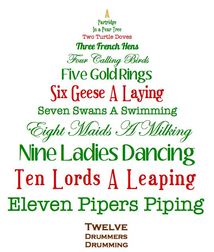 It is the 8th day of the 12 days in the Christmas season. The 8th day of celebrating the birth of Jesus, who is the light of the world. The world did not change immediately with his birth nor did it change immediately with his death and resurrection. For sure, light came to the world – but there was and still is plenty of darkness. How do we traverse the continued darkness in our world? Here is an excerpt from the chapter, “Whistling in the dark.” I was starting to dwell on the “can’ts” of my life. Or, more correctly, the “can’ts” of Pete’s life. Pete can’t drive. Pete can’t carry things across the room, like a cup of coffee or our granddaughter, Julia. Pete can’t take pictures because his hands are too shaky. Pete can walk but not too far; Pete can’t walk to the restroom at the movie theater. Pete can’t walk on the beach. These little losses were creating a growing darkness in our lives. The losses weren’t just to his body, but to how we related to one another.  This logo for Amnesty International has captured my imagination this season - a light shines even when it is surrounded by barbed wire. This logo for Amnesty International has captured my imagination this season - a light shines even when it is surrounded by barbed wire. I heard Sanford encouraging me to listen to the darkness in our lives. Listen to the silence that is found in the darkness. Sit with the silence long enough for my eyes, my physical sight as well as my emotional understanding, to adjust to the darkness. There was light, he said, even in darkness. Give it time. Be patient with the darkness. We would be able to cross through this dark place. One of the darkest places in the Christian story is the empty tomb. In Luke’s gospel, the women enter the tomb expecting to find Jesus and he isn’t there. They tell the others, who don’t believe them. Peter, one of the disciples goes into the tomb to see for himself, “When he bent over to look inside, he saw only the linen cloth. Then he returned home, wondering what had happened.” I can relate to “wondering what had happened.” When life does not go as expected, when the steps we thought we were supposed to take lead us to a dead end, when life throws us a curve and we can’t figure out what to do next. Here is an excerpt from the chapter in my book called, Christians believe in resurrection. Christians believe in the resurrection. For sure it’s not an easy doctrine to believe. I mean after all, when was the last time any of us saw someone rise from the dead? Wherever you are in your life, with whatever dreams or plans you have - as you find yourself in darkness, my hope is that you will have the courage to stay in the dark long enough to wait for enough light to cross to the other side.
My prayer is you will believe in resurrection - believe that even in the darkness of the tomb, there is new life - a whole new life on the other side. 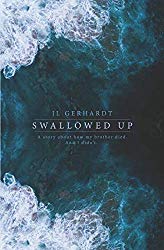 Today would be my 23rd wedding anniversary. I’ve lived nineteen months without “my person.” In those nineteen months, my grief has manifested in several textures. It has been raw. It has been fear filled. It has been angry. It has been insecure. It has been clingy. It has been heavy. It has been light. It has been colorful and it has at times been black and white. For all the ways I have grieved Pete, I am thankful. While reading Gerhardt’s new book, Swallowed Up, I was yet again affirmed that we all grieve differently. None of our losses are the same. She graciously offered me this paragraph: “Maybe you’re reading this book and you have more reason to feel abandoned than I do. Maybe the person you loved and lost left you before they died. Maybe they’d stopped trying to love you even as you loved them. Maybe they died by suicide and you can’t shake the feeling that they just wanted to get away from you. I can’t speak to your pain with authority or experience. You’re probably feeling that right now, listening to my simple story and saying in your head, “you have no idea, girl.” You’re right. I don’t. I’m sorry. Maybe you’ll find some comfort in knowing God’s been where you are. And maybe it’ll bless you to know that when God felt abandoned, God did a lot of crying.” When I read that paragraph, I put the book down and cried. And I knew God was right there with me crying. And none of this was new. I had cried and had known God was right beside me crying many times. But this author had faced me square on and she saw my grief. She saw that my grief was different than hers. She saw me. And in that moment, this book grew arms and legs – arms to hug me and legs to walk just a little bit ahead of me as if to say, “come on, you can keep going.” Gerhardt says, Swallowed Up is “in part, a book about a girl who decided in the face of death, that she didn’t want to die. That’s my grief story, and I’ve had to choose it again and again.” I haven’t written a lot about the deep sadness I have felt since Pete’s death. I guess I haven’t written a lot about it because it’s sad. And I wonder what limits people might have for sadness. I haven’t written about it because some of my sadness has questioned the value of life and I didn’t want people to reach out to me and try to talk me out of my feelings. Here’s what I know this side of Pete’s death – thinking about dying is a lot more normal than I ever thought. Considering the idea of calling it quits is a reasonable, critical thought when faced with having to live without your “person” for the rest of your days. Thinking about dying is sometimes easier than thinking about living. Thinking about living is hard. And then once again, this book stepped out in front of me and said, “even if you don’t struggle with the impulse to die, you probably find yourself tempted to be less and less alive. We mourners get out of bed later and fall into bed earlier. We stay in more. We go out less. We talk to fewer and fewer people. Maybe we eat less. Maybe we eat more but stop paying attention to the taste. We take fewer showers and fewer risks." She’s right. All of those things have been true of me. But her grief story called out to me to “stay alive.” When our instinct is to "respond to death with death. To stop seeing. To stop exploring. To stop doing. Stop feelings. Stop wondering. Stop dreaming. Stop wanting. Stop connecting. Stop loving.” I found her encouragement to “stay alive” to be strong enough to use as a stepping stone. Right foot. Stay alive. Left foot. Stay alive. But what does that mean? That’s the best part of her book. She lists dozens of big and small things that are ways we “stay alive.” Here are some of my favorites: “Stay alive means – Life is love. And loving after loss feels uncomfortable and awkward. Loving after loss feels a little like faking it and a lot like making hard choices. Loving, or just plain facing the day after loss feels a lot harder than I ever thought it would. I’m so grateful for Gerhardt's story, for her honesty, her vulnerability.
This book is an unapologetic, faith-fueled journey through heartache. I commend it to you or to a loved one who may need a companion alongside heartache. Get your copy HERE. I used to love them. Pete and I were at Disney eons ago and I sort of tricked him into going on Space Mountain – by tricked I mean, he didn’t know what the ride was and I left out details while we stood on line. And then the moment of truth came when he realized he was getting into a little cart that not only was on rails but the rails were headed into the dark. He tells this story way better than I ever will. The bottom line for me was that he stayed on the roller coaster with me… that day and all the days that followed. It has come to my attention recently that I don’t like roller coasters anymore. It seems like the average adult body would natural reject something that violent – aging knees gripping for something steady, backs that go out of line a lot easier than when we were younger and then there’s the lurching ups and downs of a stomach that knows there will be consequences to such ups and downs. I prefer to stay off roller coasters. But the ride of life? The roller coaster of life? We don’t get to choose the ups and downs. I’ve been meditating on a Frederich Buechner quote this week, “Here is the world. Beautiful and Terrible things will happen. Do not be afraid.” 13 words. He said all of that in just 13 words. Here is the world – up and down we will go. Sometimes as expected but most of the time unexpected. Our knees will grip, our backs will bend and our stomachs will lurch. Beautiful and Terrible things will happen. Recently, a truly beautiful thing has happened for me. I’ve met a beautiful, gentle man. And with him came a healthy amount of emotions. Expectation. Elation. Delight. Comfort. Fear. Panic. Wonder. My heart was crowded for the first couple weeks. All of these emotions had begun to mingle around in the living room of my heart, mingle with all the other emotions that had already made a home there. Contentment. Happiness. Sadness. Anxiety. Depression. Joy. Full joy from a life that has been filled from having been loved and having loved. My heart was crowded. Over time, I’ve rearranged or redecorated a bit to accommodate the new emotions that are steadily mingling with the old ones. The crowded feeling has subsided – to keep the metaphor of my heart as a living room, it is as if the emotions have stopped their initial “mingling, small talk” with one another and now have sat down to have full on conversations. And those conversations sometimes create a roller coaster. And again, I used to love them. Used to.
The contentment of who I have become is discussing the differences and similarities of the comfort I am beginning to feel. The anxiety that is grief is offering explanation to the new fear I feel as I open my heart again. The joy that is true in my heart is comparing notes with the wonder that has just entered the room. Up and down. Up and down. These conversations are rich and complex. I am not 24 anymore, like I was when I met Pete. I cannot un-see the terrible things that can happen in this world. Ernest Hemingway said it this way, “This world will break all of us. Some will become strong in the broken places.” Terrible things can happen. Terrible things will happen. My heart has broken in so many places. And while I want to see the light that the cracks lets in, more often than not, I just see a mangled heart. And this mangled heart is what I’m left with. It is not a “new, young, vibrant, ready-for-the-roller-coaster kind of heart” anymore. It is a fragile, bruised piece of flesh that mostly wishes the roller coasters of life can be avoided. But at the same time, my heart has hard earned resilience for what may come. So… to this beautiful, terrible world, I say, “Bring it. Apparently there is room for you in my heart.” You know how everyone asks, “Are you OK?” and we all say, “Yeah, I’m OK.”? Well, I’m not OK. And I’m OK that I’m not OK. My husband died 1 year, 2 months and 19 days ago. He was my partner, my lover, the father of my children and my very best friend. So, no… I’m not OK. I hope you’re OK that I’m not OK. Several months back, a couple people at church suggested we read the book, “It’s OK you’re not OK,” by Megan Devine. The subtitle is “meeting grief and loss in a culture that doesn’t understand.” Great idea! Let’s read it and talk about. We threw the idea out to the larger community and more than a handful of us gathered with book in hand and grief in our hearts. The discussion was rich. We slowed down the pace and allowed for lots of silence. We faced our grief and looked at each other in the eyes. We cried. We stumbled as we tried to find the right words. There was even laughter. There was understanding. We were not OK. And in that room we were all OK that we were not OK. The author of the book, Megan Devine, who lost her husband suddenly, says, “grief is visceral, not reasonable; the howling at the center of grief is raw and real.” As I write these words, my grief is raw and real. And she’s right – the center of grief sounds like a howl. Two days ago, my grief didn’t sound like a howl. It sounded buoyant and hopeful, while still being melancholy and mindful. Two days ago a dear friend was “married again.” I’ve chosen my words here carefully. For some reason I prefer it to “re-married.” Her first marriage ended when her husband died from cancer. This friend has been one of my most trusted confidants this past year. She and I have discussed at length the consequences of death. Devine says, “Death doesn’t end a relationship; it changes it.” The consequences of a marriage that ends in death is that the marriage itself doesn’t ever end. The love never ends. It changes. We live with that love for the whole of our lives. Even when married again. When she told me she was engaged, I wept on the phone as I muttered, “this is a miracle. You know that, right?!” She did know. Her heart has healed in such a way that it is both strong enough and elastic enough to love. Strong and elastic. How did such a miracle happen? And now two days after her wedding, my howling has come back and I wonder how did her howling stop? When did it stop? Or maybe didn’t. Maybe the howling at the center remains but we move away from center over time. If that’s true, how far away from center do we have to be in order to not hear the howling? And our ability to hear the howling, does that have anything to do when you’re ready to marry again? Right when I think I’m doing OK, I come up to questions like this and I feel so very close to the howling that I think I’ve barely begun to recover from Pete’s death. But Devine is right that we live in a culture that simply doesn’t understand grief. Although we don’t say it, we really think there is a time stamp on the grief process. We are uncomfortable that visceral emotions continue well into the second (and I’m told third, fourth, fifth year…) I’m deeply grateful for the faithful friends I have who are OK that I’m not OK. But I would be lying if I didn’t admit that the day after I’ve cried or shared my howling grief, I wonder if my friends secretly wonder if it’s OK that I’m not OK. I wonder if I’ve made my world uncomfortable by grieving. I wonder if folks wish I would be OK because that would make our relationships easier. But I’m not OK and I just can’t will it into being. I can’t fake this, not this time, not with something this important. I can’t rush the healing of my heart. I won’t do it. And so I’m not OK. Devine asks, “who knows what kind of world we might create when we turn to fully face all the ways our hearts get broken? What things might change? What kind of world might we create? When the full expression of what it means to love – which includes losing that which we love – is given room to unfold?”
For those in my life right now who have watched my face contort with tears, for those who have encouraged me to share my emotions, for those who have dared to listen for the howling at the center of my grief, and for those who are OK that I’m not OK, I am deeply grateful. |
Books I'm currently reading:Archives
April 2022
Categories |
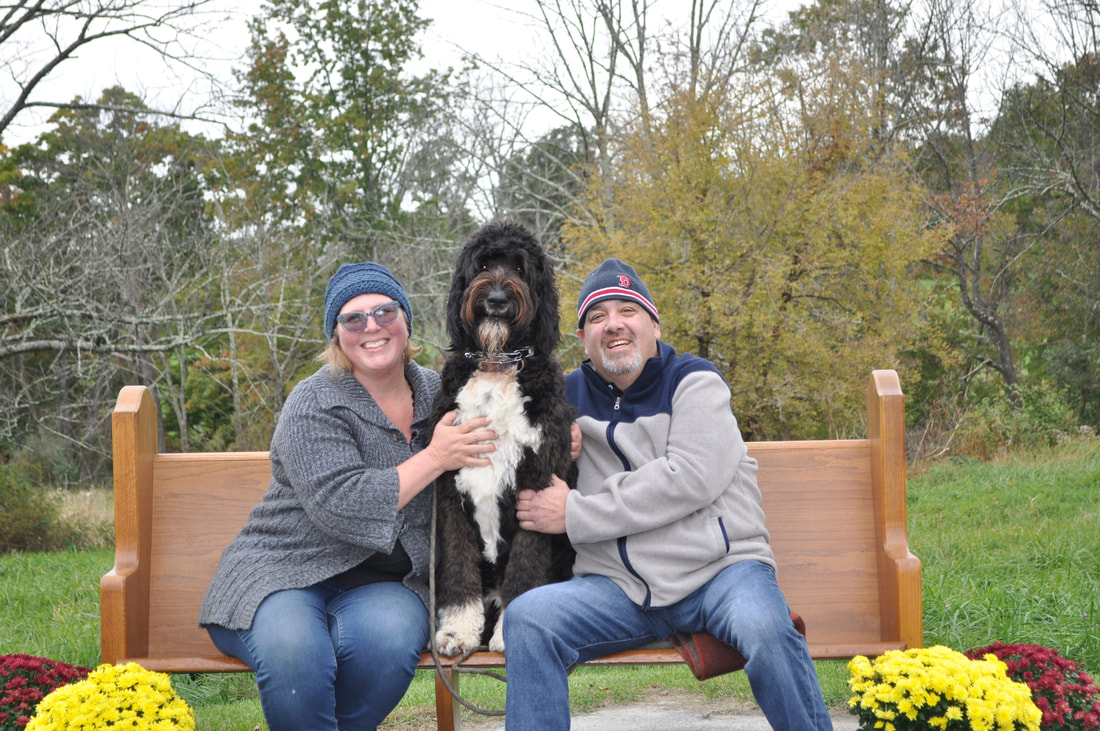
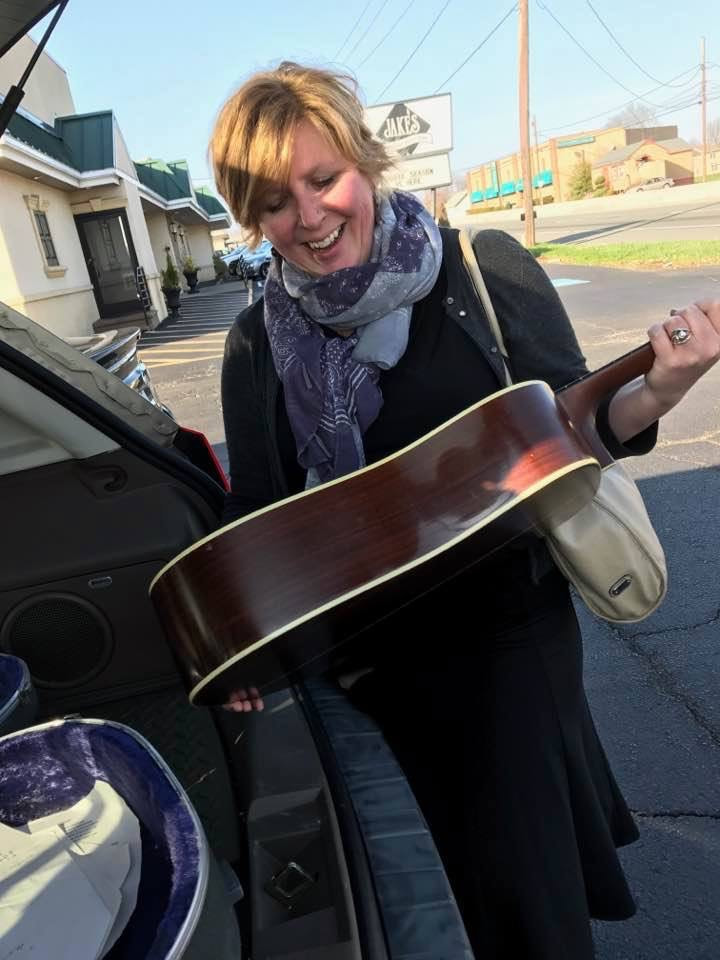
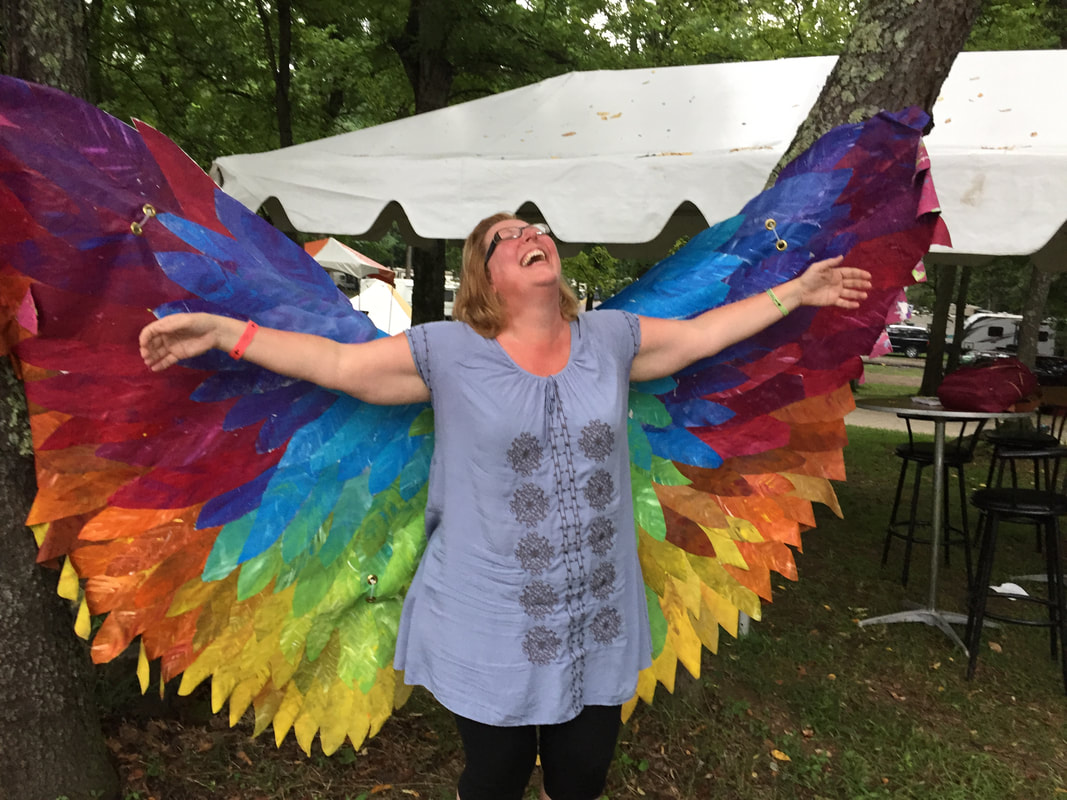
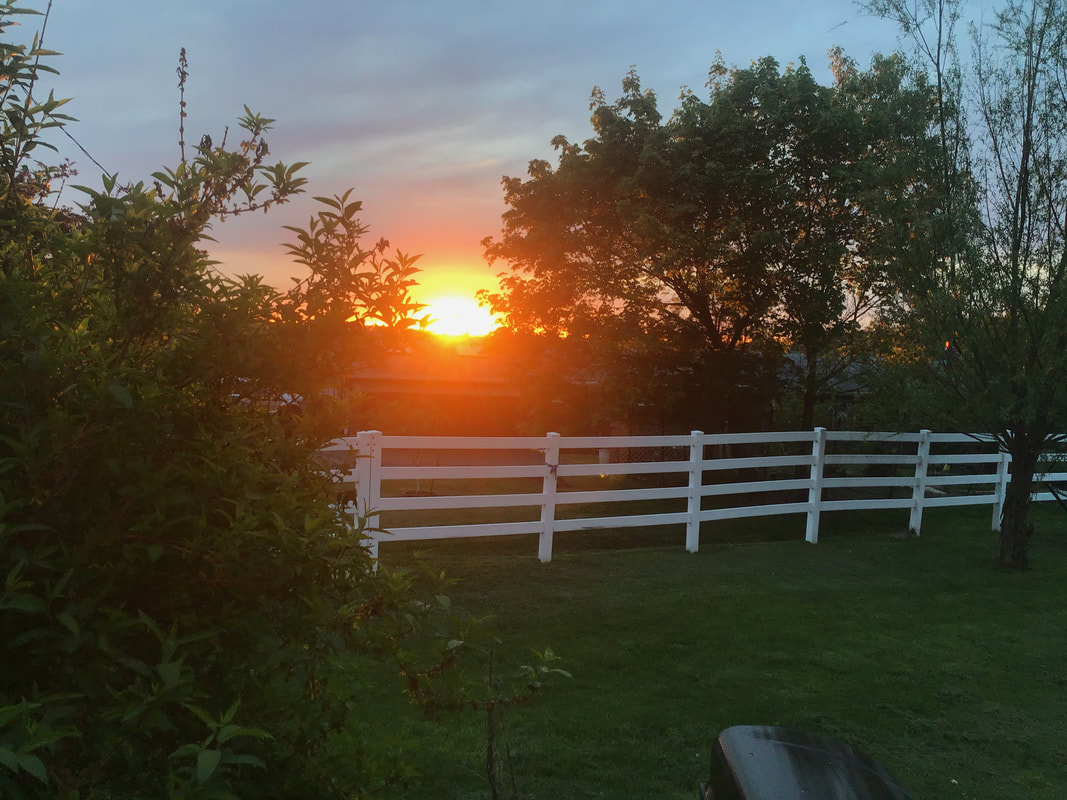
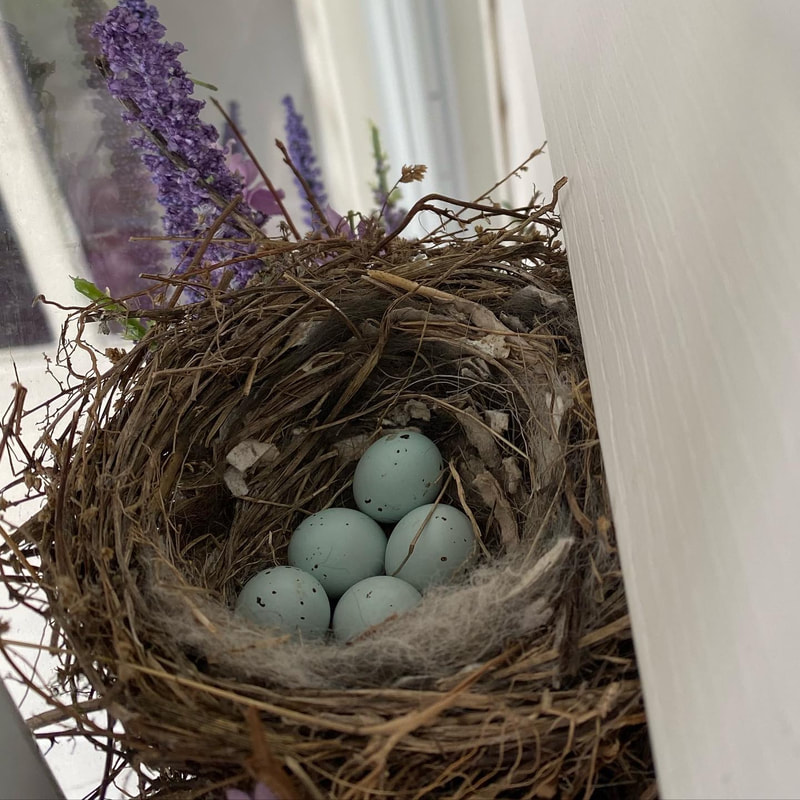
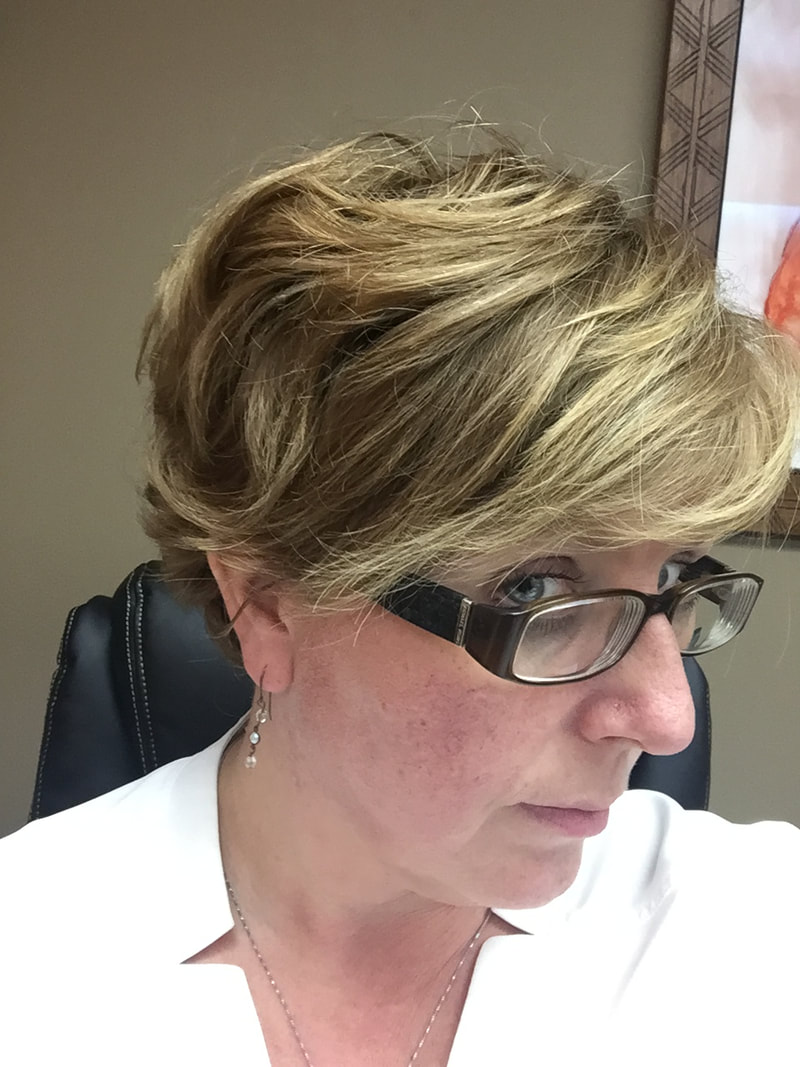
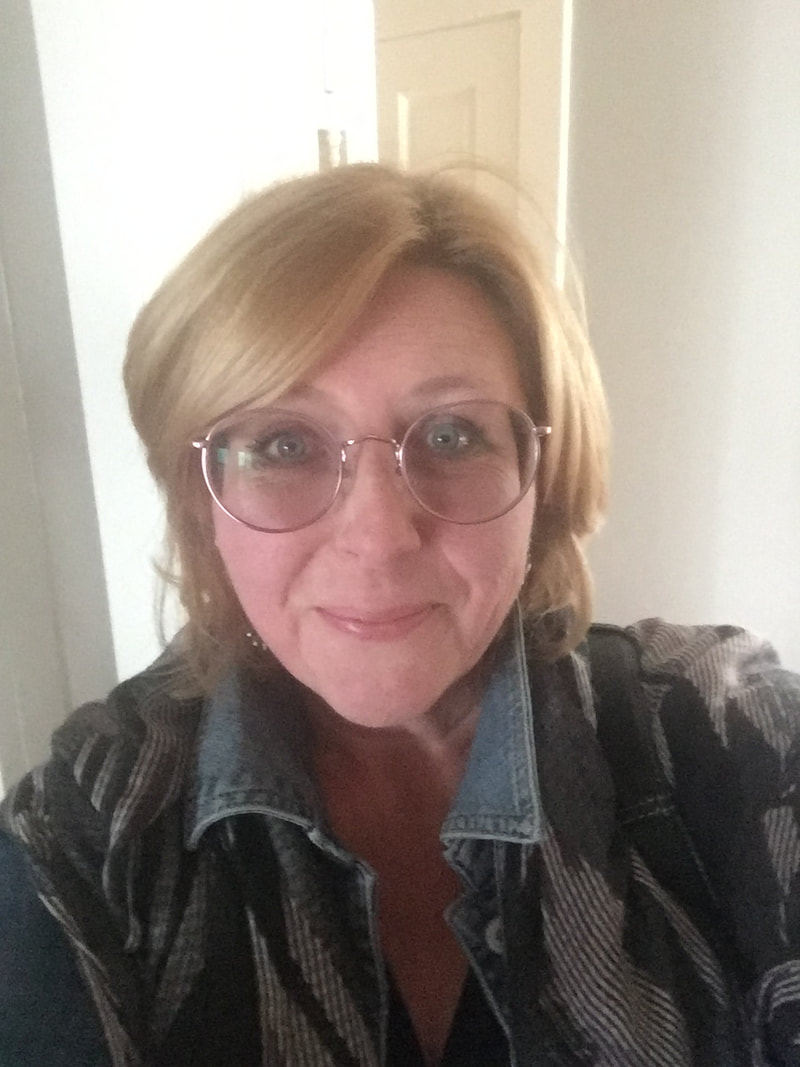
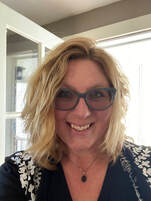
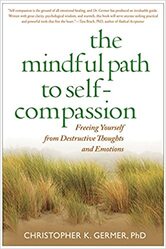
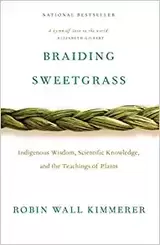
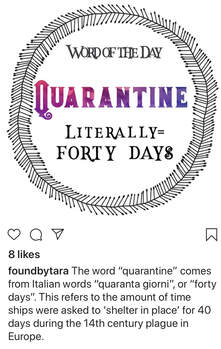
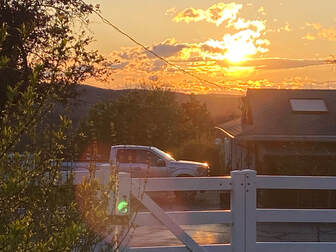
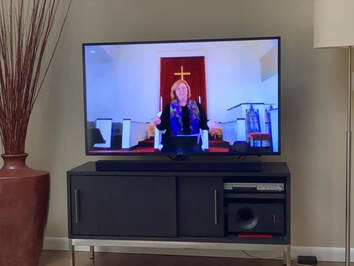
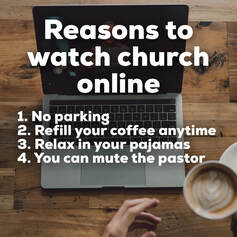
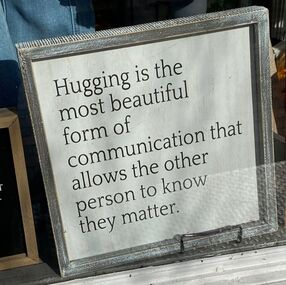





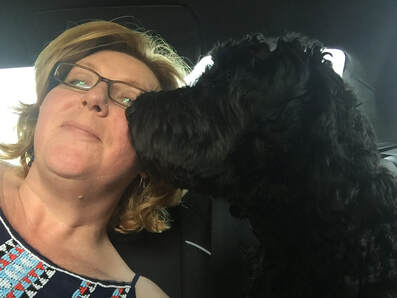
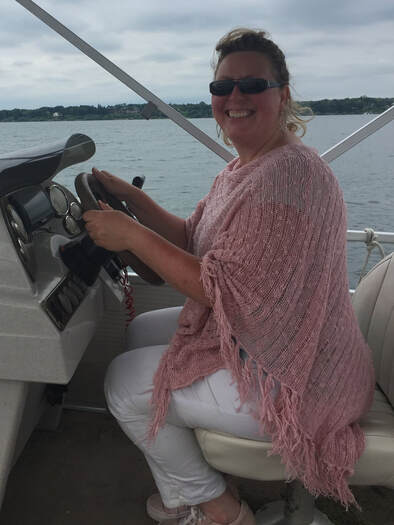
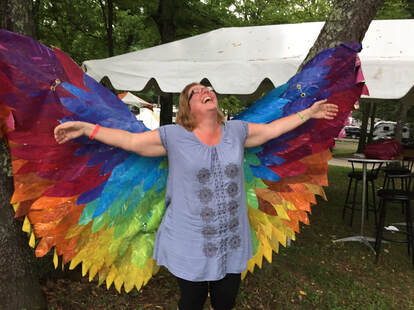
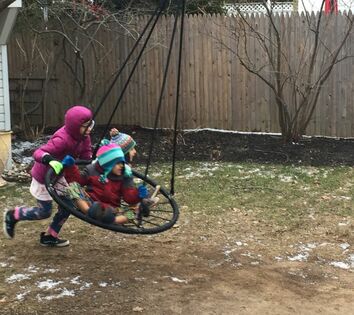
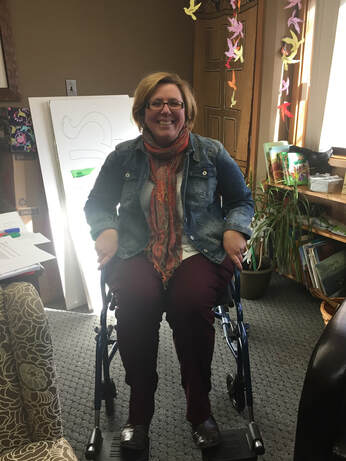
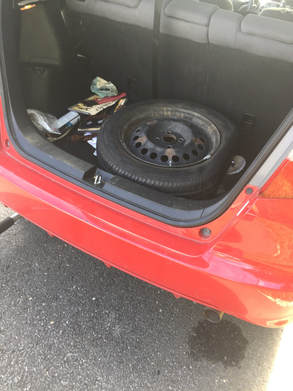
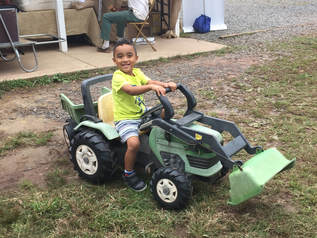
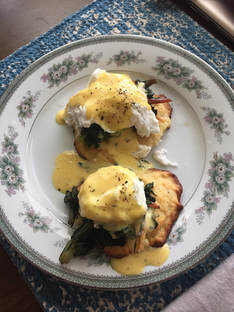
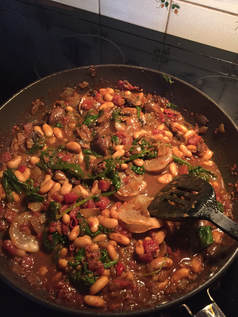
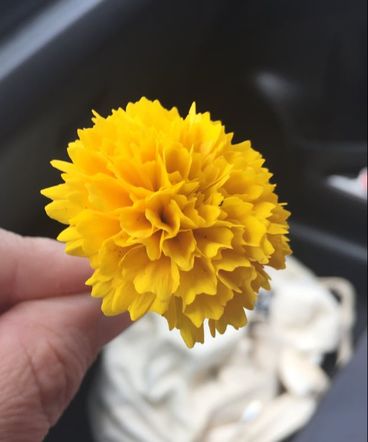
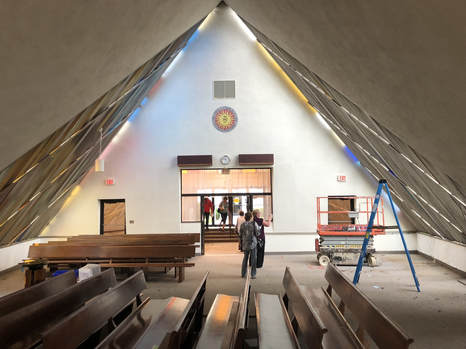
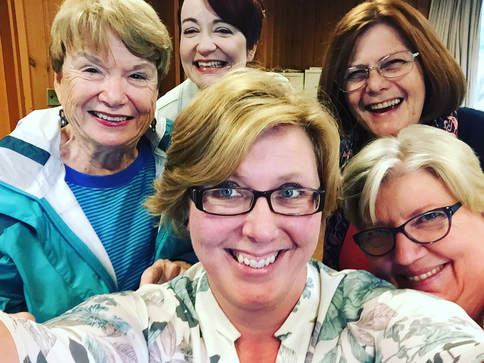
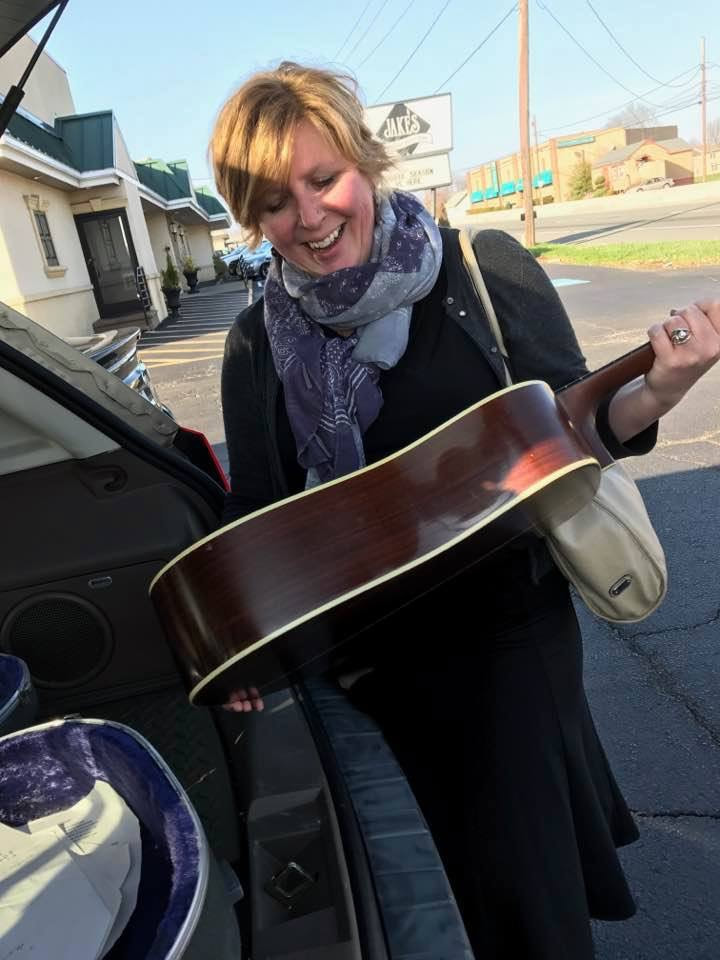
 RSS Feed
RSS Feed








